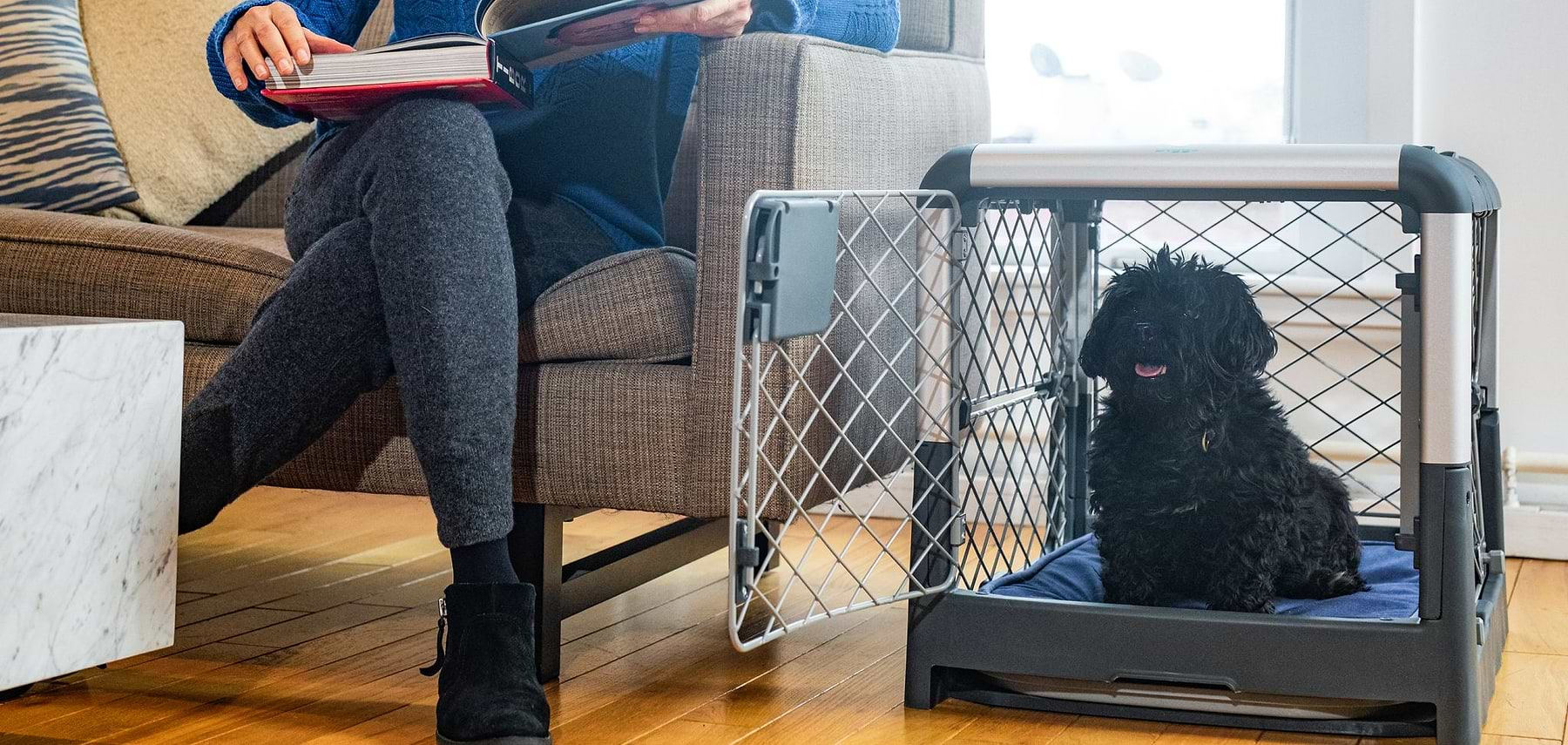Here at Diggs, safety is our highest priority. From the design of our products to the conversations we have with other pet owners, safety is always of paramount importance. We also believe that caring about pet safety goes beyond design and manufacturing as there are many variables to consider. For example, how you introduce your dog to a crate could be the difference between a safe and happy dog, and an anxious dog that is at risk.
1. Crate training is a must.
Done right, crate training helps breed familiarity, trust and a sense of security between your pup and his crate. You should not put dogs in crates that have not been properly crate trained.
2. Separation Anxiety Blues.
If your pup suffers from separation or confinement anxiety, it’s important that they receive professional training before being crated. Pay attention to your pet’s behavior and when in doubt, seek a professional’s advice.
3. Be mindful of what goes in.
Collars and leashes can get snagged and potentially be a choking hazard – they should be removed prior to being crated. Toys can help your pet feel more comfortable but make sure they are durable and not easily torn apart.
4. Don't crate punish.
It’s important not to use your crate as way to punish your pet for bad deeds or behavior. By doing so, you are creating negative connotations around the crate which can create larger behavioral problems.
5. Please don't be long.
Remember that crates are intended to be used for short period of times. A good rule of thumb – your dog shouldn’t be in their crate longer than they can hold their bowel movements.
6. Get the bedding right.
Use crate pads or dog-specific dog beds instead of blankets or your own sheets. Dogs often chew things apart, and this can result in serious choking hazards. The right pad can also make your pet more comfortable.
7. Know your crate.
Make sure you read the instruction manual for your crate and properly assemble it. Watch how-to videos, read blog posts and familiarize yourself with the right way to maintain and operate your crate.
8. Don't forget food & water.
Give your dog access to food and water before being crated so that they aren't hungry or thirsty while in their crate.
9. Exercise first.
A tired dog is a good dog. By ensuring your dog has exercised prior to crating, there is a higher likelihood that your pet will be calmer and ready for a nap.
10. Location, location, location.
Place your dog crate indoors, in an area that is temperature controlled. Ensure the immediate area around your crate is free of items that could fall into your dog’s crate or could be reached with their paws.

The Diggs Team
We believe our dogs deserve safer, better designed pet products.
You might also like
Crate training tips, stories and inspiration
View all blogsIn Your Diggs
Share your photos with #DiggsPet and tag us @DiggsPet on IG and TikTok.



